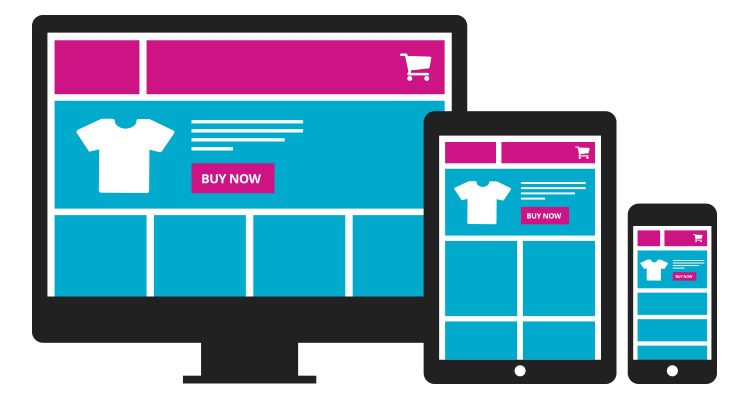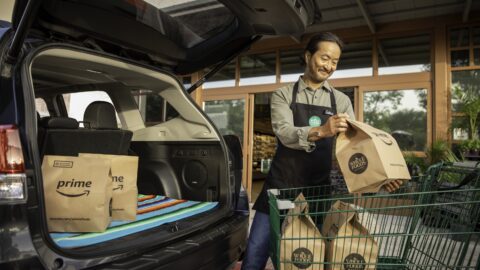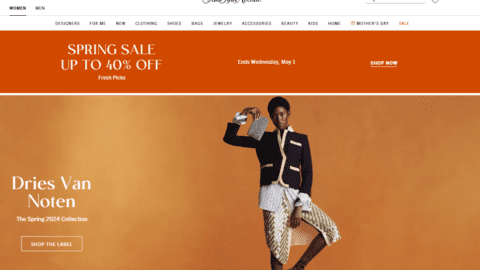The continued growth of e-Commerce has switched the roles of “supply” and “demand” within retail. Brands must now pursue consumers via every available digital touch point. Moreover, retailers need to drive a large audience, but also the right audience, to their sites.
“The retail business model we lived with our entire lives and for generations before that assumed that the customers who represent demand would physically go to the store where supply was,” said Brian Kilcourse, Managing Partner at RSR Research. “Now we live in a world where supply must go to demand. It’s exactly the opposite direction. It upsets the apple cart in virtually any operational aspect you care to discuss. So the question is, how can a retailer set up an environment where supply can go to demand?”
Brands need to use both basic and cutting-edge tools to thrive in this radically changed environment. Retailers including Starbucks and Bonobos are using these techniques to draw in consumers:
Advertisement
-
Providing value-added experiences such as entertaining media, omnichannel fulfillment and on-demand customer service;
-
Understanding the strategic value of data collection;
-
Using CRM analysis to identify top spending customers; and
-
Measuring performance through four major categories, including consumer awareness, site usage, experiences and impact on revenue and profitability.
E-Commerce Gets Experiential As Brands Integrate Channels
In recent years, retailers have modified their in-store offerings to create unique experiences for consumers. Now they are adapting the e-Commerce journey to provide experiential retail.
“Retailers today have to remember that the products they carry are barely relevant,” said Brendan Witcher, Principal Analyst at Forrester Research in an interview with Retail TouchPoints. “Consumers have figured out they can buy a blue shirt or a coffee maker at about 1,000 different places. The products you carry aren’t that important to me; what matters to me is the experience you provide. It’s how easy you make it to shop, or how well you describe products so I can become an educated shopper, or how many value-added services you offer to make me feel confident in my purchase.”
Offering omnichannel fulfillment services such as buy online/pickup in-store is no longer just an option for retailers, especially if they want visitors to return to their site. Additionally, brands must leverage their store presence to direct consumers online during or after their trip. Shoppers can’t feel or see physical products online, but if they enter a store and enjoy the experience, they’ll be incentivized to reach out online.
Two brands that have leveraged their online experiences to boost omnichannel results are Starbucks and Bonobos, noted Adam Pressman, a Partner in the retail and digital practices of global strategy and management consulting firm A.T. Kearney. Starbucks created a Mobile Order & Pay offering that gained rapid popularity. Despite rolling out the feature nationally only two years ago, Mobile Order and Pay already makes up 7% of U.S. Starbucks orders. On-the-go shoppers will always have to enter a Starbucks to buy coffee, but now they have incentive to access the site or app through their mobile device.
Bonobos started as a pure play e-Commerce retailer, but its brick-and-mortar Guideshops give shoppers a feel for the items they’re interested in before they make a purchase. Although shoppers can try on inventory at the stores, any purchase they make there goes through the e-Commerce site. Bonobos is effectively breaking down data silos in integrating both channels, creating a more transparent purchase process.
“When you go into a Bonobos Guideshop, your order in many cases is happening through your own account,” Pressman said in an interview with Retail TouchPoints. “They’re processing that information so that it’s available to you once you leave the store. When you leave, they’re creating a common data structure, by which you as a customer will have access to your consumer data at all times.”
E-Commerce Experiences Must Entertain
An online retail experience also needs to be fun to keep the consumer engaged. Videos and blogs can create more of a connection between the consumer and the retailer, and may even inspire purchases.
“Retail is entertainment,” RSR’s Kilcourse said. “And I believe that’s true even for the most mundane of experiences. Shopping should be fun. It shouldn’t be an arduous and unpleasant task. Your e-Commerce site has to have that aspect, and you can see this in some of the best sites today. They offer rich media, and that’s given rise to third-party content aggregators and web site performance optimization technologies. As we add more rich content to make our web sites entertaining and fun, the need for immediacy becomes really important.”
But while brick-and-mortar integration, value-added services and media content all are valuable investments, retailers also need to know their own limitations.
“The smartest thing retailers can do today is not get too far ahead of themselves,” Witcher explained. “Chatbots, for example, are being tested and piloted this year by retailers, but mostly for service. It’s not yet time for you to do an augmented reality experience on your web site if you can’t show the right products to the right customers. If you haven’t gotten the basics in place, then it’s not time to get fancy. We see too many organizations that still haven’t created great customer experiences before moving on to the next shiny object. No one comes to a retailer’s web site and says, ‘I’m so disappointed there’s no virtual reality.’”
Go Beyond Demographics To Identify Target Customers
All retailers need to prioritize data collection and analysis to optimize e-Commerce experiences for the consumer. Rick Bruner, VP of Research & Analytics at Viant, recommends that brands rely on more than just demographic data when targeting customers.
“Retailers often create segments like ‘Females age 25 to 54,’ but this segment spans multiple generations from Millennials to Baby Boomers — who we can all agree are pretty different in their behaviors, income and media consumption,” Bruner said in an interview with Retail TouchPoints. “If you considered the difference between a young woman three years out of college and a 54-year-old mother of three grown children, would the same creative or message appeal to both? This type of strategy is hardly nuanced targeting. Demographics aren’t nearly as predictive of real buying segments as are observed shopping behaviors.”
This dynamic makes CRM platforms valuable for retailers, allowing them to mine their existing customer database and form a clear picture of who their heaviest-spending customers are.
There are three segments of “best customers” accounting for 80% of retail spending, according to a survey from Viant and Nielsen:
-
Digital Introverts, spending $665 on average in last year’s holiday season. While this segment represents only 6% of all customers, Digital Introverts account for roughly 16% of all spending at department stores. They have no distinctive demographic skew, but they do the most research before buying and don’t actually enjoy shopping in stores;
-
Parents, spending $617 on average. This segment is 61% male and consists of social shoppers who plan in advance, relying heavily on online research and over-indexing on mobile devices; and
-
Convenience Shoppers, spending $576 on average. This segment values a positive, easy shopping experience. The many conveniences they value include available clothing sizes, well-organized merchandise, store location, a convenient returns policy and easy parking.
“The real takeaway here is that doing some deeper analysis on key characteristics and common audience groups or personas can be very informative about who your best customers are,” Bruner said. “If you try to please everybody with everything, your efforts may be better applied by focusing on the people that are actually generating the most revenue and profit for the business.”
4 Metrics That Resolve Customer Pain Points
Retailers seeking to accurately measure their own performance and drive more consumers to an e-Commerce site should focus on four specific categories, according to a Forrester report, titled: The Retail eCommerce Metrics That Matter:
-
Awareness and adoption, in which retailers use internal or third-party survey data to understand the awareness among current customers and prospects for the traditional e-Commerce site as well as other digital touch points, such as mobile sites and apps;
-
Use, in which retailers measure data points such as page views per user, time on-site, and page abandonment to expose problems and opportunities. Sophisticated retailers look at these metrics by customer segments such as new users, repeat users, sale shoppers, or buyers in certain subcategories;
-
Experience, in which e-Commerce teams measure whether customers believe their online/mobile experiences are useful, easy and enjoyable. Retailers can gather Net Promoter Scores or send email or pop-up surveys, such as exit surveys, to see if visitors feel they achieved their goals after visiting the site; and
-
Impact, in which retailers quantify the effect that e-Commerce has on revenue and profitability. For example, brands can measure shopper behavior before and after they purchase for the first time in a given channel.
Retailers can use these four metrics to assess the value of their sites’ individual content, functionality and design elements across all devices, including PCs, smartphones and tablets.
The e-Commerce competition remains intense, especially as Amazon’s market share continues to grow. But despite Amazon’s dominance, it isn’t a panacea that fulfills every single customer’s desire. There’s still plenty of demand for great retail experiences, so it’s up to brands to ensure they can supply an optimized e-Commerce presence. Retailers can succeed in reeling in consumers to their own web site by being smart about how they measure their own performance; using CRM platforms to identify their best, most valuable consumers; and building a more experiential, entertaining brand offering that integrates better customer service and omnichannel fulfillment options.









